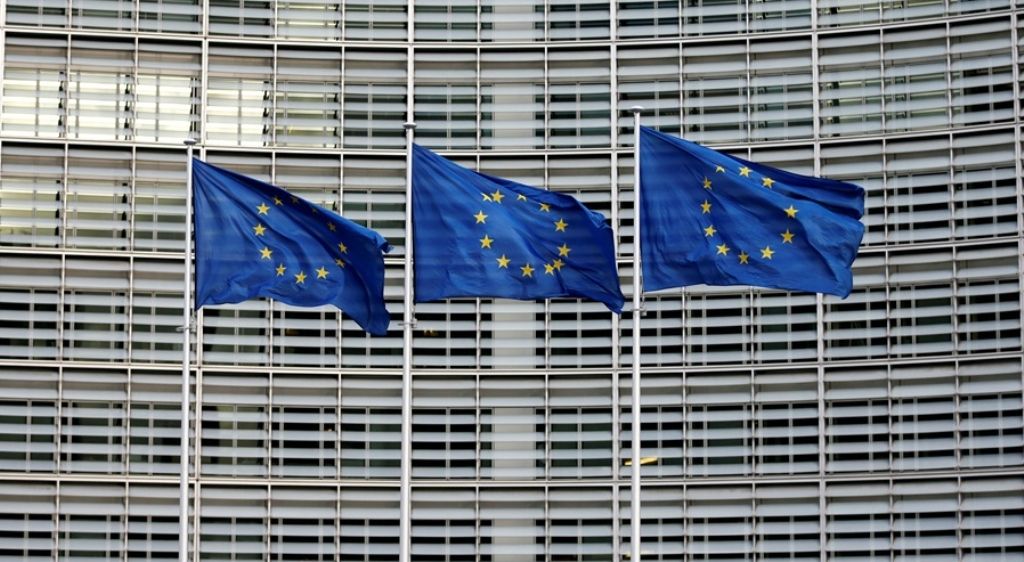IPCEI Gaining Momentum in the Development of European Industry
To sustain the dynamic development of new technologies and the accelerating transformation of the EU economy, the mechanism of important projects of common European interest, IPCEI, is gaining importance. Created as a special form of public aid to strengthen European industry, IPCEI can contribute to the implementation of breakthrough solutions, including in the production and storage of hydrogen as energy or the development of battery technology, and to strengthen the global competitiveness of the Union. Its potential for disturbing competition in the internal market, though, remains a challenge.
 POOL/Reuters/Forum
POOL/Reuters/Forum
The Mechanism
The purpose of the IPCEI is to finance projects implemented jointly by the Member States to increase the competitiveness of the EU economy while considering environmental, digital, and sustainable development priorities. Projects should be innovative and implemented on a large scale, while carrying serious financial and technological risk, meaning that without public support, companies would not take on such investment risk. IPCEI provides for higher support and more flexible rules for grants than for standard state aid. It also allows financing for the first industrial deployment, that is, the implementation of new products or services and the introduction of innovative production processes, but not mass production.
IPCEI has existed since 1957 and its current legal basis is Art. 107 of the Treaty on the Functioning of the European Union. Yet, until 2014 it was not applied because of the prevailing belief in the EU that industrial policy should be left to the discretion of the Member States. Only the consequences of the European debt crisis and growing competition from non-European enterprises prompted the European Commission (EC) to activate the mechanism, defining the detailed conditions for its use. The first implemented project was an infrastructure undertaking—a rail and road connection between Denmark and Germany—approved by the European Commission in 2015.
In 2018, a group of experts, mainly business representatives, was gathered and the Strategic Forum on IPCEI established in order to select value chains key from the point of view of the economic potential of the EU. Six sectors with key chains were identified: smart health (digitisation of services and devices), low carbon industry, hydrogen technologies, industrial internet of things, cybersecurity, and clean and autonomous vehicles.
In November 2021, an EC Communication detailed the principles of IPCEI, aimed at facilitating the participation of small and medium-sized enterprises (SMEs). The new rules are the result of both Strategic Forum recommendations and Member State suggestions. The minimum number of countries involved in the project has been increased from two to four. IPCEI’s visibility was also improved, as all countries must be notified of planned calls for projects.
Implementation of Projects
Member States play a major role in initiating the thematic scope of a specific project. The EC then develops the criteria necessary for financial aid at the national level. Countries carry out a call for interest among domestic companies according to their own legal and budget procedures (some countries finance IPCEI from the state budget, others from EU funds) and political priorities (e.g., in line with the National Recovery Plans). In the next step, one Member State takes over the role of coordinator in order to match projects from different countries into a joint venture forming a coherent value chain. This stage enables companies to collaborate internationally and to formulate final project goals.
Since 2017, the EC has approved four IPCEI projects (Table 1). The first was a microelectronics project involving five countries. It covered five areas of technology: energy-efficient semiconductors, new methods for creating electric vehicle components, intelligent sensors, and advanced optical devices. The next two projects concerned batteries. They were aimed at developing new technologies that would allow them to compete especially with Asian producers. They were devoted to the development of raw material extraction and purification processes to obtain high-quality materials, as well as to the development of innovative battery systems, including software and algorithms, and the design of modern and safe processes for recycling and refining of derived materials. The latest project was approved by the EC in July this year for the production of hydrogen from renewable and low-carbon sources, including fuel cells, hydrogen storage, transport and distribution, and applications, especially in the mobility sector. Currently, initiatives in three more areas are awaiting EC approval (Table 2): the second edition on microelectronics, next-generation cloud infrastructure and services, and in the area of public health.
Challenges of IPCEI
Projects implemented under the mechanism have the potential to distort competition in the internal market. Financing the implementation of innovative solutions on an industrial scale from public funds favours large, advanced technological economic entities from several EU countries, such as Germany, France, or Italy. Only the first two countries, due to their larger administrative and financial potential, have taken on the role of coordinator of individual IPCEI projects so far, which entails both obligations and greater control over projects, which may be beneficial for their domestic enterprises. Although the implemented projects are international in nature and should lead to spillover effects (spreading of socio-economic benefits to the entire EU), state aid contributes to a differing pace of development between the most advanced enterprises capable of using the IPCEI support and their potential competition.
Funding IPCEI at the national level also leads to an increase in the gap between the richest countries and those that do not spend significant public funds on innovation. Support from the Multiannual Financial Framework and the EU Reconstruction Fund fill this gap to some extent, but spending EU funds entails a greater administrative burden, which ultimately rests on businesses.
Moreover, the process of granting public aid under IPCEI is not very transparent. The lack of publicly available information on the scope of support provided and details of implemented projects is weighed against the need to protect confidential business data, especially against non-European competitors. At the same time, due to the EC’s limited role in overseeing the IPCEI mechanism, doubts will arise as to the effectiveness of the evaluation tools for implemented projects and the effectiveness of the public funds spent.
Conclusions and Recommendations
The added-value for the EU of the IPCEI mechanism is the increasing involvement of Member States at different stages of complex value chains that entail technological breakthroughs. Eventually, the effective use of national and EU funds may lead to the emergence of new competitive advantages in the EU, such as in the area of hydrogen for energy or the production of more efficient batteries from renewable raw materials.
At the same time, in the short term, due to the specificity of this mechanism, there is a serious risk of disturbances in the internal market. Smaller companies that are unable to compete with the larger entities or sustain breakthrough technological solutions are particularly at risk.
To increase the participation of European SMEs in the mechanism, the EC should develop effective tools to include relatively small companies with high development potential and know-how in the created projects, for example, as subcontractors. For this purpose, it is necessary for the EC to cooperate with the Member States at the stage of designing the competition criteria.
The greatest risk related to IPCEI—increased gaps in economic development between individual EU regions—is difficult to minimise due to the current disproportions between the regions in the development of industry and technology, as well as the distribution of capital in individual EU countries. A solution could be the creation of a European IPCEI fund, within or parallel to the MFF, with resources to support the most innovative companies from countries with less innovation funding potential. However, that would require overcoming the reluctance of Denmark, the Netherlands, Sweden and other states hesitant to develop new EU funding schemes.
Table 1. Existing IPCEI projects
|
IPCEI name |
Start date |
End date |
Countries involved |
Public aid granted (estimated) |
|
Microelectronics I |
December 2018 |
2024 |
Austria (since 2021), France, Germany, UK (per withdrawal agreement), Italy |
€1.75 billion |
|
Batteries I |
December 2019 |
2031 |
Belgium, Finland, France, Germany, Italy, Poland, Sweden |
€3.2 billion |
|
Batteries II |
January 2021 |
2028 |
Austria, Belgium, Croatia, Finland, France, Germany, Greece, Italy, Poland, Slovakia, Spain, Sweden |
€2.9 billion |
|
Hydrogen |
July 2022 |
n/a |
Austria, Belgium, Czechia, Denmark, Estonia, Finland, France, Germany, Greece, Netherlands, Poland, Portugal, Slovakia, Spain, Norway (non-EU participant) |
€5.4 billion |
Table 2. Projects Awaiting EC Final Acceptance
|
IPCEI name |
Expected start date |
Countries Involved (declared) |
|
Microelectronics II |
H2 2022 |
20 countries, including Italy, Germany, France, and Poland |
|
CLOUD-CIS |
H2 2022 |
Belgium, Czechia, Estonia, France, Germany, Hungary, Italy, Luxembourg, Netherlands, Poland, Spain, Slovenia
|
|
Health |
2022 |
Austria, Belgium, Denmark, France, Greece, Hungary, Ireland, Italy, Lithuania, Luxembourg, Netherlands, Poland, Romania, Slovenia |




